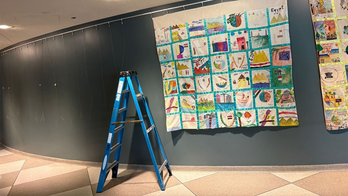Savor your coffee; someone probably lost sleep over it
I have a kind of reverence for the coffee bean.
Nearly every family trip we went on when I was a kid was spent flying across the planet from Boston to Rio de Janeiro, where almost my entire extended family lives. There aren't many coffee farms in the humid tropical climate of Rio, but if you drive out eight to 12 hours to the tiny town where my grandparents grew up in the state of Minas Gerais, you'll find arid rolling hills as far as you can see. That's where my cousins on my mom's side live, work and grow coffee.
That trek — a five-hour flight, then an eight-hour flight, then a road trip — was always just the lead-up to the last leg of the journey. We'd take the exhausted car and its passengers off the cobblestone streets, down a dirt road and to the top of a hill, where in my cousin's kitchen there would be at any hour of day or night some pão de queijo (or some cake) and a freshly poured thermos.
We'd drink the coffee out of little glass cups and finally get to work catching up and telling stories to one another. My parents would sit by the wood stove, and my brother and I would sometimes wander out while the adults were talking to chase the chickens and throw around a lemon like a tennis ball for the farm dogs to fetch. Coffee in Minas is usually served sickly sweet, but never with milk, and never iced, even in the middle of summer. Once the stars came out, we'd soak them in until the air got cold, and then we'd squeeze ourselves by the wood stove with another cup and feel a warm certainty that the coffee thermos must be bigger on the inside.
Most of the highest-quality beans in Minas Gerais are sold abroad. When I was a kid especially, there wasn't really a coffee culture in Brazil the way there is in New York or Boston — that third-wave coffee culture that has a kind of purist bent to it, mindful of the "notes" in the brew.
But in college, I worked at a cafe that served the snooty tourists, students and professors in Harvard Square. And there I was taught to notice all those things I'd never learned about coffee, even though I'd seen the coffee fruit on the trees and watched firsthand as my cousins spread the fruit onto big, wavy multicolored sheets under the sun to dry.
I learned then that my cousins' process for preparing coffee was just one of many ways to do it — you could dry it in the sun or in a big machine, or it could be fermented, or washed first. All these methods could change the way the coffee tasted. I also learned that different regions have different taste profiles; some countries tend to be brighter, some earthier, some more complex or fruity. Brazil tends to be pretty soft, but more chocolatey and rich, like bourbon.
I learned to think about tasting coffee as playing a word-association game. What does it make you think of? What memory comes up for you? Is there citrus? Or wood smoke?
Today when I get up and make my first cup of coffee, I do it like performing a sacred ritual. I know that those beans traveled far, and were cared for. They were grown, and watered, and dried, and then roasted. Someone probably lost sleep over them when frost was in the forecast. It only feels right to me to measure out the beans on a scale, and grind them fresh, and make sure to let the beans bloom a bit before pouring the rest of the water over them. And when I take my first sip, I make sure to let my brain go blank, listen to the coffee and see where it takes me.
What are you really into? Fill out this form or leave us a voice note at 800-329-4273, and part of your submission may be featured online or on the radio.
Disclaimer: The copyright of this article belongs to the original author. Reposting this article is solely for the purpose of information dissemination and does not constitute any investment advice. If there is any infringement, please contact us immediately. We will make corrections or deletions as necessary. Thank you.







